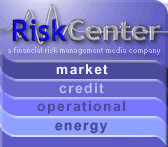Location: California
Author: Melina Trevino
Date: Thursday, March 6, 2008
Increasing pessimism about the U.S. economy is causing many CEOs to
preemptively lower growth goals expectations and plan conservatively for
2008 – but is this a smart strategy? With phrases such as “darkening
outlook”, “market freeze”, and “economic meltdown” dominating the financial
headlines, companies are electing to implement a cautious approach.
“CEOs tightening their economic belt and implementing cautionary growth
strategies, and consumers spending more conservatively will fundamentally
cause any real slowdown or recession we may experience,” states Frost &
Sullivan Chairman David Frigstad. “The problem is a spiral effect driven by
fear. A fear-based climate is causing consumers to lose confidence and cut
back on their spending, banks will tighten their credit policies and turn a
false perception of doom and gloom into reality, thus driving the economy
into recession.”
While this response is driven by the perceived fear, it is in fact, out of
proportion with the actual condition of the U.S. economy. “There are no
economic measurements that support the fact that we are going into a
recession. The fundamentals are strong for continued growth and the overall
global economy is very healthy,” continues Frigstad.
The global economy in general is being driven by several huge factors which
significantly outweigh any blip in the U.S. mortgage market. Global
investment in commercial real estate increased from $665 billion in 2006 to
$930 billion in 2007, and foreign buyers will likely look to the U.S. for
properties with long-term value. Furthermore, the current exchange rate of
$1.51 per Euro expects to support the growth of exports by offering strong
opportunities for the U.S. economy.
A recession is not inevitable, but it may be a self-fulfilling prophecy.
Frost & Sullivan research reveals the current concern over the “crisis” in
the U.S. subprime market is overstated and reflects the risky lending
practices of banks. The subprime mortgage market accounts for $1.3 trillion
of the total U.S. economy, of that only 1.5 percent is actually at risk.
Considering the default rate of 1.5 percent is the same today as it was in
2004, it seems foolhardy to tie this amount to a nationwide economic
downturn.
Growth opportunities reside in uncertainty and this should not change in the
time ahead. “Overall, our research on technology, markets, and economics
clearly shows that the global economy remains strong and fueled by
technology-driven productivity improvements, enhanced logistics, global
democratization trends, better trade infrastructure, and a highly dynamic,
commercially-focused Asian business community,” concludes Frigstad.

To subscribe or visit go to: http://www.riskcenter.com